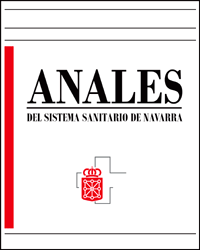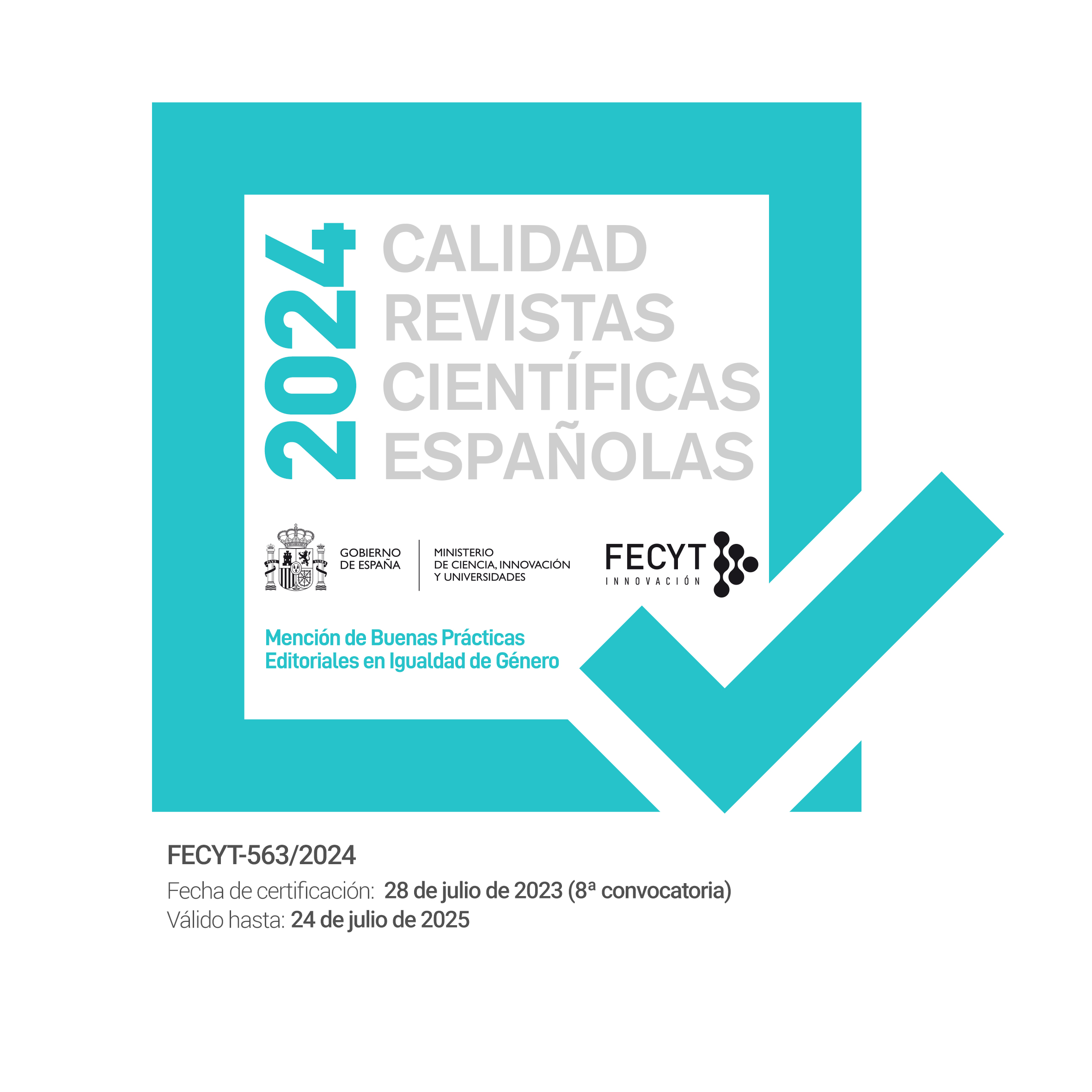Blinatumomab como puente al transplante en leucemia linfoblástica aguda refractaria con cromosoma Filadelfia negativo: a propósito de un caso
DOI:
https://doi.org/10.23938/ASSN.0392Palabras clave:
Blinatumomab. Cromosoma Filadelfia negativo. Trasplante de progenitores hematopoyéticos. Enfermedad mínima residual. Leucemia linfoblástica aguda refractaria.Resumen
Blinatumomab es el primer anticuerpo biespecífico para células T que ha mostrado eficacia para conseguir enfermedad mínima residual negativa en pacientes con leucemia linfoblástica aguda B recidivante o refractaria tras la quimioterapia convencional. Sin embargo, existe escasa evidencia en cuanto a su utilización off label como optimizador de la remisión citológica previa al trasplante de progenitores hematopoyéticos (TPH).
Se expone el caso de un paciente que se sometió en condiciones óptimas a TPH alogénico tras un único ciclo de blinatumomab, describiendo el manejo de los efectos adversos presentados y los resultados obtenidos.
Descargas
Citas
WOLACH O, STONE RM. Blinatumomab for the treatment of philadelphia chromosome-negative, precursor b-cell acute lymphoblastic leukemia. Clin Cancer Res 2015; 21: 4262-4269.
TOPP MS, GÖKBUGET N, ZUGMAIER G, KLAPPERS P, STELLJES M, NEUMANN S et al. Phase II trial of the anti-CD19 bispecific T cell-engager blinatumomab shows hematologic and molecular remissions in patients with relapsed or refractory B-precursor acute lymphoblastic leukemia. J Clin Oncol 2014; 32: 4134-4140.
BENJAMIN JE, STEIN AS. The role of blinatumomab in patients with relapsed/refractory acute lymphoblastic leukemia. Ther Adv Hematol 2016; 7: 142-156.
PORTELL CA, WENZELL CM, ADVANI AS. Clinical and pharmacologic aspects of blinatumomab in the treatment of B-cell acutelymphoblastic leukemia. Clin Pharmacol 2013; 12; 5: 5-11.
European Medicines Agency. Ficha técnica de Blinatumomab (Blincyto®). https://ec.europa.eu/health/documents/community-register/2015/20151123133349/anx_133349_es.pdf. Consultado el 2 de octubre de 2018.
GÖKBUGET N, DOMBRET H, BONIFACIO M, REICHLE A, GRAUX C, FAUL C et al. Blinatumomab for minimal residual disease in adults with B-precursor acute lymphoblastic leukemia. Blood 2018; 22.
ZENG Y1, KATSANIS E. Potential niche indications for blinatumomab as a bridge to hematopoietic cell transplantation. Bone Marrow Transplant 2017; 52: 1671-1673.
Sociedad Española de Hematología y Hemoterapia. Grupo Programa Español para el Tratamiento de las Hemopatías Malignas. Protocolo LAL-AR/2011 (versión 5 de julio de 2013) para el tratamiento de la leucemia aguda linfoblástica de alto riesgo bcr/abl negativa en adultos. https://www.sehh.es/images/stories/recursos/pethema/protocolos/LAL/LAL_AR_2011version-5-7-2013.pdf.
ZUGMAIER G, GÖKBUGET N, KLINGER M, VIARDOT A, STELLJES M, NEUMANN S et al. Long-term survival and T-cell kinetics in relapsed/refractory ALL patients who achieved MRD response after blinatumomab treatment. Blood 2015; 126: 2578-2584.
FOLAN SA, REXWINKLE A, AUTRY J, BRYAN JC. Blinatumomab: bridging the gap in adult relapsed/refractory B-cell acute lymphoblastic leukemia. Clin Lymphoma Myeloma Leuk 2016; 16: S2-5.
MARTINELLI G, BOISSEL N, CHEVALLIER P, OTTMANN O, GÖKBUGET N, TOPP MS et al. Complete hematologic and molecular response in adult patients with relapsed/refractory Philadelphia chromosome-positive B-precursor acute lymphoblastic leukemia following treatment with blinatumomab: results from a phase II, single-arm, multicenter study. J Clin Oncol 2017; 35: 1795-1802.
Publicado
Cómo citar
Número
Sección
Licencia
Derechos de autor 2019 Anales del Sistema Sanitario de Navarra

Esta obra está bajo una licencia internacional Creative Commons Atribución-CompartirIgual 4.0.
La revista Anales del Sistema Sanitario de Navarra es publicada por el Departamento de Salud del Gobierno de Navarra (España), quien conserva los derechos patrimoniales (copyright ) sobre el artículo publicado y favorece y permite la difusión del mismo bajo licencia Creative Commons Reconocimiento-CompartirIgual 4.0 Internacional (CC BY-SA 4.0). Esta licencia permite copiar, usar, difundir, transmitir y exponer públicamente el artículo, siempre que siempre que se cite la autoría y la publicación inicial en Anales del Sistema Sanitario de Navarra, y se distinga la existencia de esta licencia de uso.








